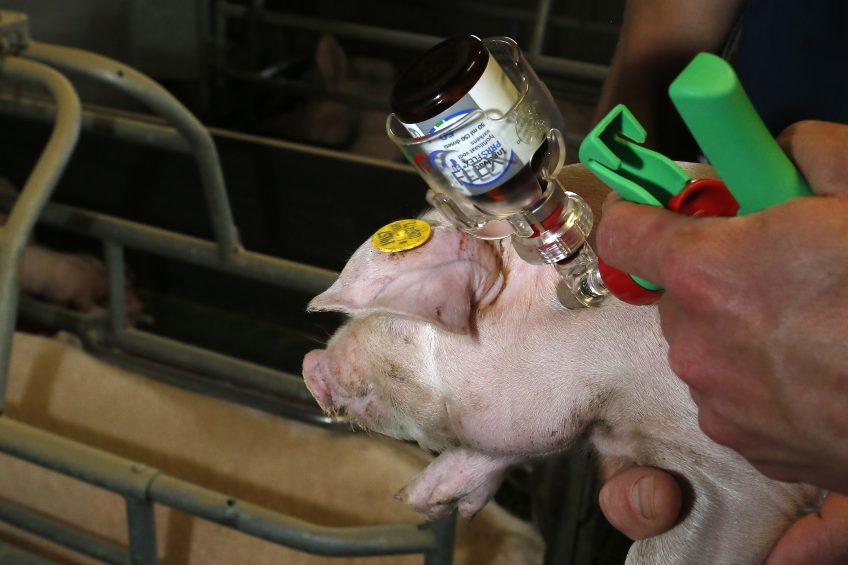US: Vaccines and biosecurity to replace antibiotics

Increased use of vaccines and better sanitation and biosecurity are the 2 most common changes US pig, cattle and poultry producers are making in response to the loss of shared use antibiotics.
That was a key finding of a new study just completed by animal health and nutrition consulting company Brakke Consulting, headquartered in Dallas, TX. The survey, New Strategies for Health and Performance in US Livestock and Poultry Production, was conducted among beef, dairy, swine and poultry producers in late 2016. Since January 1, 2017, new antibiotic regulations as well as the Veterinary Feed Directive have been effective in the United States.
Variation among species groups
In a press release, the consulting firm wrote, “Although there was some variation among species groups, vaccination protocols and improved sanitation were the top 2 strategies for 70% or more of all producers. Other strategies included reduced co-mingling of animals/birds, changes in feed additives, changes in facilities, use of immune modulators and changes in genetics.”
The press release continued to say, “The most common change in feed additives was increased use of direct-fed microbials, also called probiotics. Other less common feed additive changes included increased use of enzymes, prebiotics, oligosaccharides, organic acids and phytogenics. More than 90% of poultry producers indicated that they were changing one or more feed additives in response to the loss of antibiotics, more than any other species group.”
Widespread concern about impact of antibiotics loss
The study was conducted late in 2016; half of producers said they had already made changes to their operations. About 75% indicated that they were ready for the changes, of which the poultry sector was the most prepared.
There was widespread concern about the potential impact of the loss of shared use antibiotics. Only 38% of producers believed that they would be able to maintain production and profit levels without them.
The New Strategies study also rated perceptions of company image, product quality and customer service of individual animal health and nutrition suppliers, including pharmaceutical companies, feed additive suppliers, and environmental hygiene companies.











